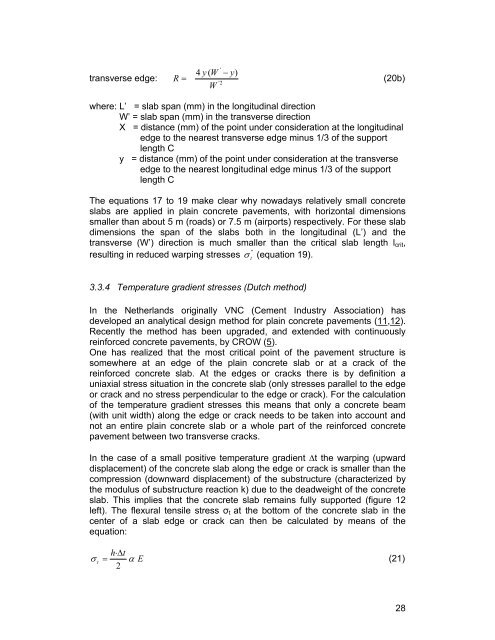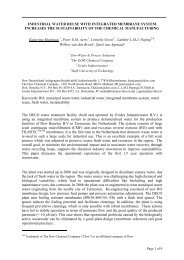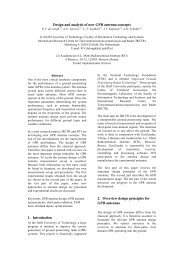CT4860 STRUCTURAL DESIGN OF PAVEMENTS
CT4860 STRUCTURAL DESIGN OF PAVEMENTS
CT4860 STRUCTURAL DESIGN OF PAVEMENTS
Create successful ePaper yourself
Turn your PDF publications into a flip-book with our unique Google optimized e-Paper software.
'<br />
4 y ( W − y)<br />
transverse edge: R = (20b)<br />
'2<br />
W<br />
where: L’ = slab span (mm) in the longitudinal direction<br />
W’ = slab span (mm) in the transverse direction<br />
X = distance (mm) of the point under consideration at the longitudinal<br />
edge to the nearest transverse edge minus 1/3 of the support<br />
length C<br />
y = distance (mm) of the point under consideration at the transverse<br />
edge to the nearest longitudinal edge minus 1/3 of the support<br />
length C<br />
The equations 17 to 19 make clear why nowadays relatively small concrete<br />
slabs are applied in plain concrete pavements, with horizontal dimensions<br />
smaller than about 5 m (roads) or 7.5 m (airports) respectively. For these slab<br />
dimensions the span of the slabs both in the longitudinal (L’) and the<br />
transverse (W’) direction is much smaller than the critical slab length lcrit,<br />
''<br />
resulting in reduced warping stresses σ (equation 19).<br />
3.3.4 Temperature gradient stresses (Dutch method)<br />
In the Netherlands originally VNC (Cement Industry Association) has<br />
developed an analytical design method for plain concrete pavements (11,12).<br />
Recently the method has been upgraded, and extended with continuously<br />
reinforced concrete pavements, by CROW (5).<br />
One has realized that the most critical point of the pavement structure is<br />
somewhere at an edge of the plain concrete slab or at a crack of the<br />
reinforced concrete slab. At the edges or cracks there is by definition a<br />
uniaxial stress situation in the concrete slab (only stresses parallel to the edge<br />
or crack and no stress perpendicular to the edge or crack). For the calculation<br />
of the temperature gradient stresses this means that only a concrete beam<br />
(with unit width) along the edge or crack needs to be taken into account and<br />
not an entire plain concrete slab or a whole part of the reinforced concrete<br />
pavement between two transverse cracks.<br />
In the case of a small positive temperature gradient ∆t the warping (upward<br />
displacement) of the concrete slab along the edge or crack is smaller than the<br />
compression (downward displacement) of the substructure (characterized by<br />
the modulus of substructure reaction k) due to the deadweight of the concrete<br />
slab. This implies that the concrete slab remains fully supported (figure 12<br />
left). The flexural tensile stress σt at the bottom of the concrete slab in the<br />
center of a slab edge or crack can then be calculated by means of the<br />
equation:<br />
h⋅∆t<br />
σ t = α E<br />
(21)<br />
2<br />
t<br />
28











